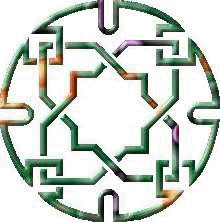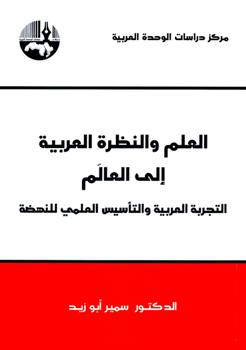



It is not our aim here to present 'all' new books in philosophy in Arabic and English. Rather, we purport in this page to present to the reader the most important newly published books in the last as well as this year. Books are chosen on the basis of presenting new ideas in philosophy that are scarcely known to the wider arena of the Arabic philosophy and which of specific importance to this community.
"From Summetria to Symmetry: The Making of a Revolutionary Scientific Concept".
Giora Hon and, Bernard R. Goldstein, Springer, (Aug. 2008).
General Description:
The concept of symmetry is inherent to modern science, and its evolution has a complex history that richly exemplifies the dynamics of scientific change. This study is based on primary sources, presented in context: the authors examine closely the trajectory of the concept in the mathematical and scientific disciplines as well as its trajectory in art and architecture. The principal goal is to demonstrate that, despite the variety of usages in many different domains, there is a conceptual unity underlying the invocation of symmetry in the period from antiquity to the 1790s which is distinct from the scientific usages of this term that first emerged in France at the end of the 18th century. The key figure in revolutionizing the concept of symmetry is the mathematician, Adrien-Marie Legendre. His achievements in solid geometry (1794) are contrasted with the views of the philosopher, Immanuel Kant, on the directionality of space (1768). (Amazon editorial)

1. "Science and the Arabic Worldview - the Arabic practice and the scientific foundation of the renaissance", by Samir Abuzaid, Center for Arabic Unity, Beirut, October 2009.
(Front material) (Review- in arabic)
General Description:
The author starts by wondering is there what we can call the "The Arabic Worldview"? Then he formulates the problematic of the book in another way: he states that the real barrier for the modern and contemporary Arabic societies is the "Worldview of such societies", and he sees that the existence of such a barrier necessitates 'Re-foundation' of contemporary science into such a worldview. With this general view, he deals with both sides of the issue: science, from one side, and the Arabic worldview, form the other. Consequently, he reformulates the essence of the scientific thought, which we hope to found in the society, from one side, and reformulates the essence of the worldview of the society as well as its relation to science, from the other.
In order to fulfill such an aim the author introduces the concept of 'Consistency' as the central concept in the 'Worldview'. If every human being, or every culture' possess a worldview, then its basic trait is its consistency with itself and with the real world. Hence, the success of the ancient Arab/Islamic civilization and its wide propagation in the ancient world is due to its consistency with itself and with the world.
The author afterwards introduces his suggestion of the methodology to achieve such a consistency while dealing with contemporary scientific problems. He proposes to depend on what he calls the 'separation – connection' methodology. In order to formulate such a methodology he suggests that we depend on a model from the Arab/Islamic heritage that exemplifies such a methodology. Such a model should possess three basic traits: to be a scientific model, to depend on a probabilistic view of induction, and not to endorse the complete subject/object separation. The application which the author introduces as a model is the method of 'separation – connection' of Abdulqaher Aljurjani, which is based on three basic steps: (1) Constructing both the religious and the scientific problems, each within its domain; (2) Separating the two problems each within its domain; (3) Constructing a binding relation between the two problems. In Aljurjani's case, such a binding relation was that the linguistic ability could increase without limit.
The final result is that the dependence on the 'separation – connection' methodology, in addition to the positive participation in the process of formulation of the new scientific paradigm, as well as participating in the formulation of the new laws of nature in its different levels; all of this leads at the end to solve the problem of consistency and introducing a new solution to the problematic of the human sciences and its re-foundation.
Center for Arabic Unity Studies
2. "The Crisis of the unsettled Arabic Civilization", by Abu Ya'rub Almarzouqi, the Arabic home for science publishers, Oct. 10, 2009.
General Description:
 The
author, who is specialized in the Arabic, German, and ancient Greek
philosophy, purports to present an overall presentation of the current
crisis of the our Arabic civilization, and to dig deeply into its roots.
In his view, such a crisis is still critical, not only for Arabs and
Muslims, but it extends to cover the whole humanity. He tries to
understand such a contemporary situation through analyzing its far
reasons in the Arab/Islamic history. He analyzes the works presented by
four major thinkers who dealt with the viability of the Arab/Islamic
civilization from the point of view of the Islamic philosophy of history
and philosophy of religion. Those thinkers are Al-Ghazali and Ibn Rush
who represent the limit of the theoretical position, and Ibn Taymia and
Ibn Khaldoun who represent the practical position.
The
author, who is specialized in the Arabic, German, and ancient Greek
philosophy, purports to present an overall presentation of the current
crisis of the our Arabic civilization, and to dig deeply into its roots.
In his view, such a crisis is still critical, not only for Arabs and
Muslims, but it extends to cover the whole humanity. He tries to
understand such a contemporary situation through analyzing its far
reasons in the Arab/Islamic history. He analyzes the works presented by
four major thinkers who dealt with the viability of the Arab/Islamic
civilization from the point of view of the Islamic philosophy of history
and philosophy of religion. Those thinkers are Al-Ghazali and Ibn Rush
who represent the limit of the theoretical position, and Ibn Taymia and
Ibn Khaldoun who represent the practical position.
Alhayat newspaper
| Conferences |
| Books |
| General |